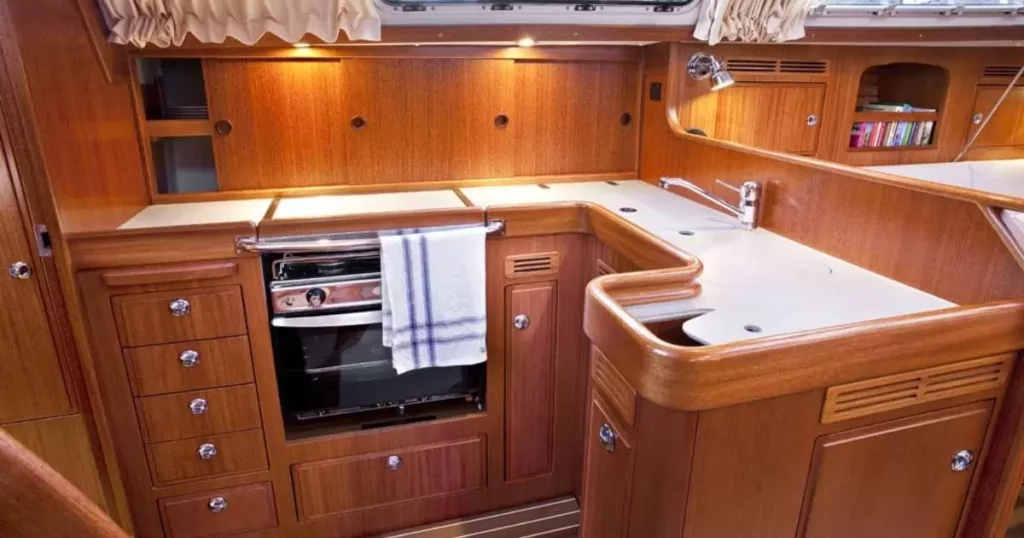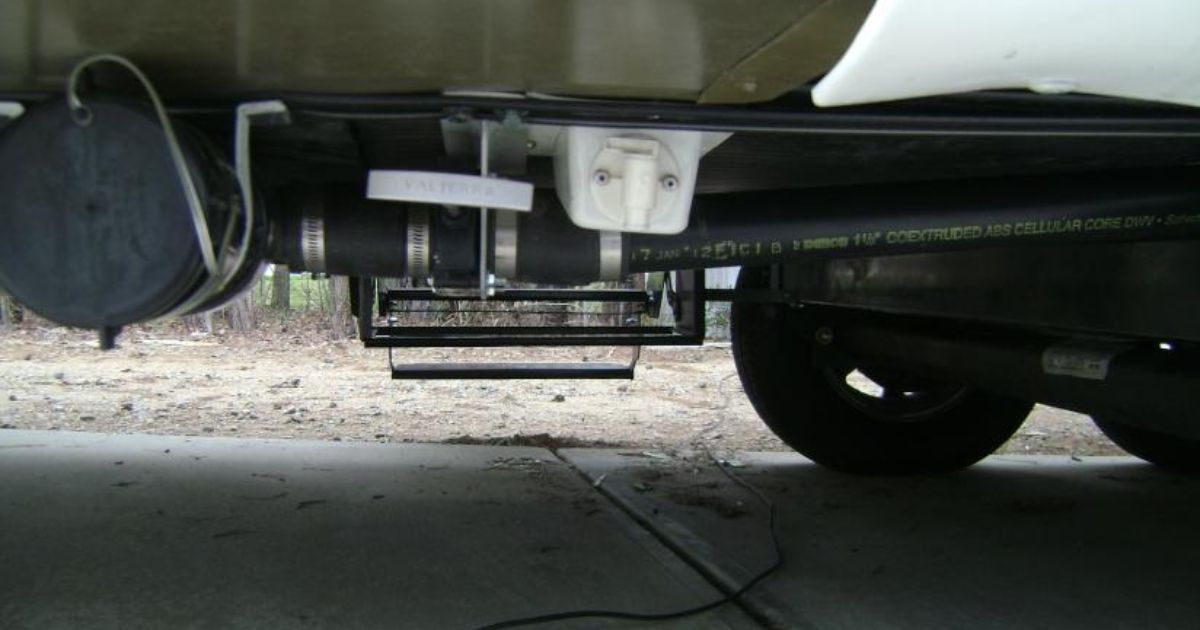A galley tank on an RV is a crucial component. It’s a specialized holding tank designed to store and manage wastewater from the kitchen area of the vehicle. This tank plays a vital role in maintaining cleanliness and functionality on your RV travels.
Curious about the inner workings of your RV’s plumbing system? Wondering, What is a galley tank on an RV? Let’s dive into this essential component and uncover its role in keeping your kitchen activities hassle-free on the road.
The galley tank is an integral part of the RV’s plumbing system. It is separate from other wastewater tanks, like the black and gray tanks, to handle kitchen-related waste. Proper maintenance and understanding of this tank are essential for a smooth and enjoyable RV experience.
Exploring the Galley Tank in Your RV
The galley tank is a crucial part of your RV’s plumbing system. It serves a specific purpose: to collect and store wastewater from the kitchen sink. This tank ensures that the dirty water from your cooking and dishwashing activities is safely contained and can be disposed of properly.
When you’re on the road in your RV, it’s essential to understand how the galley tank works and how to maintain it. In this article, we’ll explore the purpose of a galley tank, its key features, and the steps to drain and clean it effectively.
The Purpose of a Galley Tank
The galley tank in your RV is designed to handle one specific type of wastewater the water that flows down the kitchen sink. When you wash dishes, vegetables, or your hands in the kitchen, the used water, also known as gray water, needs a dedicated storage space. That’s where the galley tank comes into play.
This tank prevents the gray water from mixing with other types of wastewater in your RV, such as sewage from the toilet. By keeping them separate, it ensures that the gray water can be disposed of more easily and safely, either at a dump station or an appropriate facility.
Key Features of Galley Tanks

Galley tanks come in various sizes to accommodate different RV models and user needs. They are typically made from durable materials like polyethylene to withstand the rigors of travel. These tanks have secure lids to prevent leaks and odors.
Here are some key features of galley tanks:
- Capacity: Galley tanks can vary in capacity, typically ranging from 15 to 50 gallons, depending on the RV’s size and design.
- Secure Connections: They are equipped with secure hose connections for easy drainage and maintenance.
- Ventilation: Proper ventilation prevents the buildup of odors inside the tank.
How do you drain the galley tank in an RV?
Draining the galley tank is a straightforward process. Follow these steps:
Find the Drain Valve: Locate the drain valve for the galley tank. It’s usually situated near the tank itself, often on the RV’s exterior.
Prepare a Hose: Attach a dedicated hose to the drain valve. Ensure it’s long enough to reach the designated disposal area, such as a dump station.
Open the Valve: Carefully open the drain valve, allowing the gray water to flow through the hose and into the disposal area. Ensure there is a proper slope for efficient drainage.
Monitor the Flow: Keep an eye on the flow of water to ensure it’s emptying completely. Once the tank is empty, close the valve securely.
How do you clean a galley tank?
Cleaning the galley tank is essential to prevent odors and maintain proper functionality. Follow these steps:
Use Tank Cleaners: There are RV-specific tank cleaning products available. Follow the manufacturer’s instructions to use them effectively.
Flush with Water: After using a cleaner, flush the tank with plenty of water to ensure all residue is removed.
Regular Maintenance: Consider adding tank cleaning to your regular RV maintenance schedule. This helps prevent buildup and keeps your galley tank in top shape.
How Does the Galley Tank Work?
The galley tank in your RV functions as a separate holding tank dedicated to collecting wastewater from the kitchen sink. When you use the sink to wash dishes or prepare meals, the dirty water flows down the drain and into this tank. It’s designed to keep kitchen wastewater isolated from the other plumbing systems in your RV.
This segregation is essential because kitchen wastewater often contains food particles, grease, and soap residue. By diverting it to the galley tank, you prevent clogs and ensure a more efficient overall plumbing system in your RV.
Benefits of Having a Galley Tank
Having a galley tank in your RV offers several advantages. Firstly, it prevents the mixing of kitchen wastewater with your gray or black water tanks, which contain water from other sources like showers and toilets. This separation makes it easier to manage and dispose of different types of wastewater.
Secondly, a galley tank helps maintain a cleaner and more odor-free environment in your RV. Since kitchen wastewater can contain food scraps, disposing of it separately reduces the risk of unpleasant odors emanating from your plumbing system.
Maintenance Tips for Your Galley Tank
Proper maintenance of your galley tank is crucial for its efficient operation. Regularly clean the tank to prevent the buildup of grease and food debris. You can use specialized tank cleaning solutions for this purpose. Make sure the tank’s valve is closed when you’re not actively draining the sink, and only open it when you’re ready to dump the tank at an RV dump station.
To avoid clogs, use a sink strainer to catch larger food particles before they go down the drain.Lastly, be mindful of what you dispose of in the kitchen sink, avoiding substances that can lead to blockages or damage the tank. If you’re experiencing issues like your RV generator keep shutting off, it’s also essential to address those promptly to ensure a smooth and trouble-free camping experience.
Upgrading Your RV’s Galley Tank System
If you’re considering upgrading your RV’s galley tank system, there are a few options to explore. You can opt for a larger tank if you find that the current one fills up quickly during your travels. Some RVers also choose to install tank heating pads to prevent freezing in cold weather.
Another upgrade to consider is adding a tank monitoring system. This allows you to keep track of the galley tank’s capacity and know when it’s time to empty it. Overall, upgrading your galley tank system can enhance your RV experience and make kitchen duties more convenient.
Now, let’s take a look at a table summarizing key data related to galley tanks in RVs:
| Aspect | Details |
| Purpose | Collects kitchen sink wastewater |
| Importance | Prevents clogs and odors |
| Maintenance | Regular cleaning and strainers |
| Upgrades | Larger tank, heating pads, monitoring system |
| Efficiency | Keeps kitchen wastewater separate from other tanks |
FAQs
What should I do if my galley tank starts to smell?
If you notice odors from your galley tank, try cleaning it with specialized tank cleaner and ensure the tank valve is closed when not in use.
Can I use regular drain cleaners in my galley tank?
It’s best to avoid using regular drain cleaners as they may contain harsh chemicals that can harm the tank. Use specialized tank cleaning products instead.
Is it possible to upgrade the size of my RV’s galley tank?
Yes, you can upgrade to a larger galley tank to increase its capacity and reduce the frequency of emptying.
Conclusion
In summary, the galley tank in your RV plays a vital role in ensuring the smooth operation of your kitchen plumbing. It keeps kitchen wastewater separate, reducing the risk of clogs and unpleasant odors. With proper maintenance and the option to upgrade your galley tank system, you can enjoy a hassle-free RV experience with efficient kitchen facilities.
The next time you wonder about the importance of that dedicated tank under your kitchen sink, remember its essential function in maintaining cleanliness and convenience on your RV adventures. Keep it well-maintained, consider upgrades if needed, and enjoy worry-free kitchen activities on the road.











